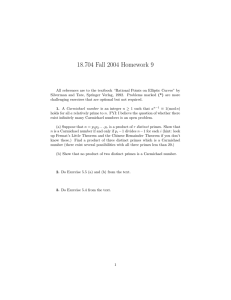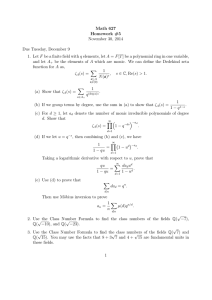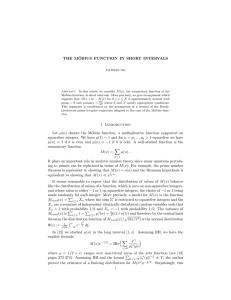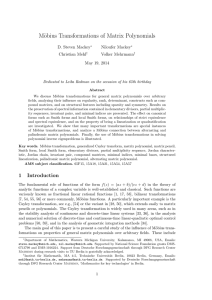∑
advertisement
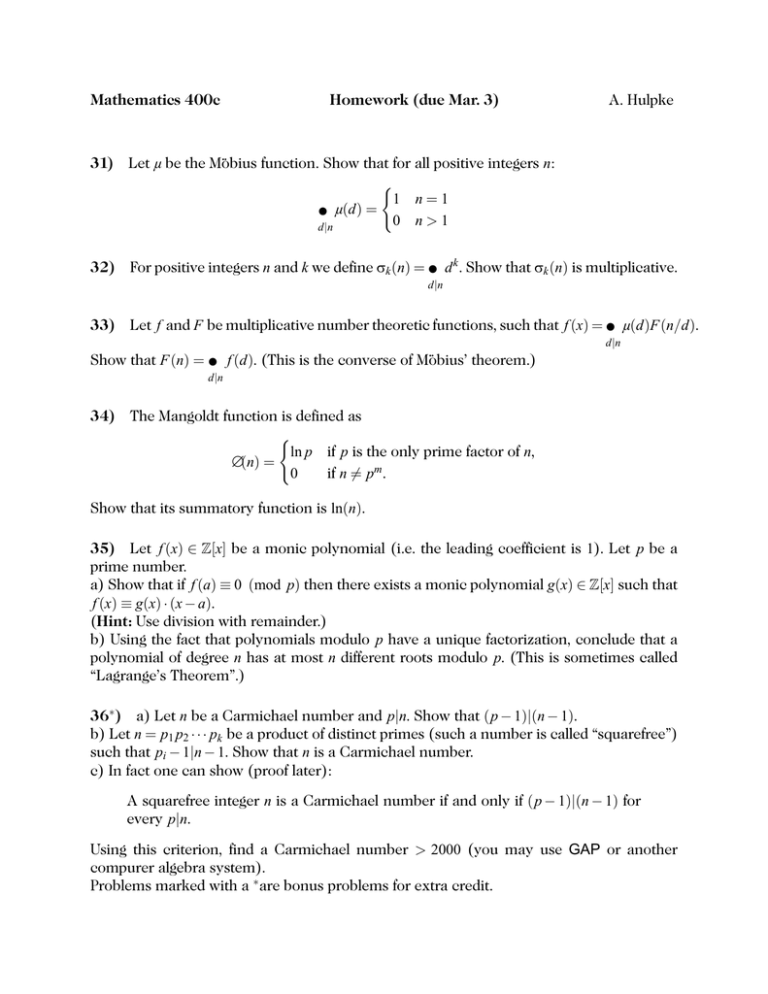
Mathematics 400c Homework (due Mar. 3) A. Hulpke 31) Let µ be the Möbius function. Show that for all positive integers n: ( 1 n=1 ∑ µ(d) = 0 n > 1 d|n 32) For positive integers n and k we define σk (n) = ∑ d k . Show that σk (n) is multiplicative. d|n 33) Let f and F be multiplicative number theoretic functions, such that f (x) = ∑ µ(d)F(n/d). Show that F(n) = ∑ f (d). (This is the converse of Möbius’ theorem.) d|n d|n 34) The Mangoldt function is defined as ( ln p if p is the only prime factor of n, ∆(n) = 0 if n 6= pm . Show that its summatory function is ln(n). 35) Let f (x) ∈ Z[x] be a monic polynomial (i.e. the leading coefficient is 1). Let p be a prime number. a) Show that if f (a) ≡ 0 (mod p) then there exists a monic polynomial g(x) ∈ Z[x] such that f (x) ≡ g(x) · (x − a). (Hint: Use division with remainder.) b) Using the fact that polynomials modulo p have a unique factorization, conclude that a polynomial of degree n has at most n different roots modulo p. (This is sometimes called “Lagrange’s Theorem”.) 36∗ ) a) Let n be a Carmichael number and p|n. Show that (p − 1)|(n − 1). b) Let n = p1 p2 · · · pk be a product of distinct primes (such a number is called “squarefree”) such that pi − 1|n − 1. Show that n is a Carmichael number. c) In fact one can show (proof later): A squarefree integer n is a Carmichael number if and only if (p − 1)|(n − 1) for every p|n. Using this criterion, find a Carmichael number > 2000 (you may use GAP or another compurer algebra system). Problems marked with a ∗ are bonus problems for extra credit.


